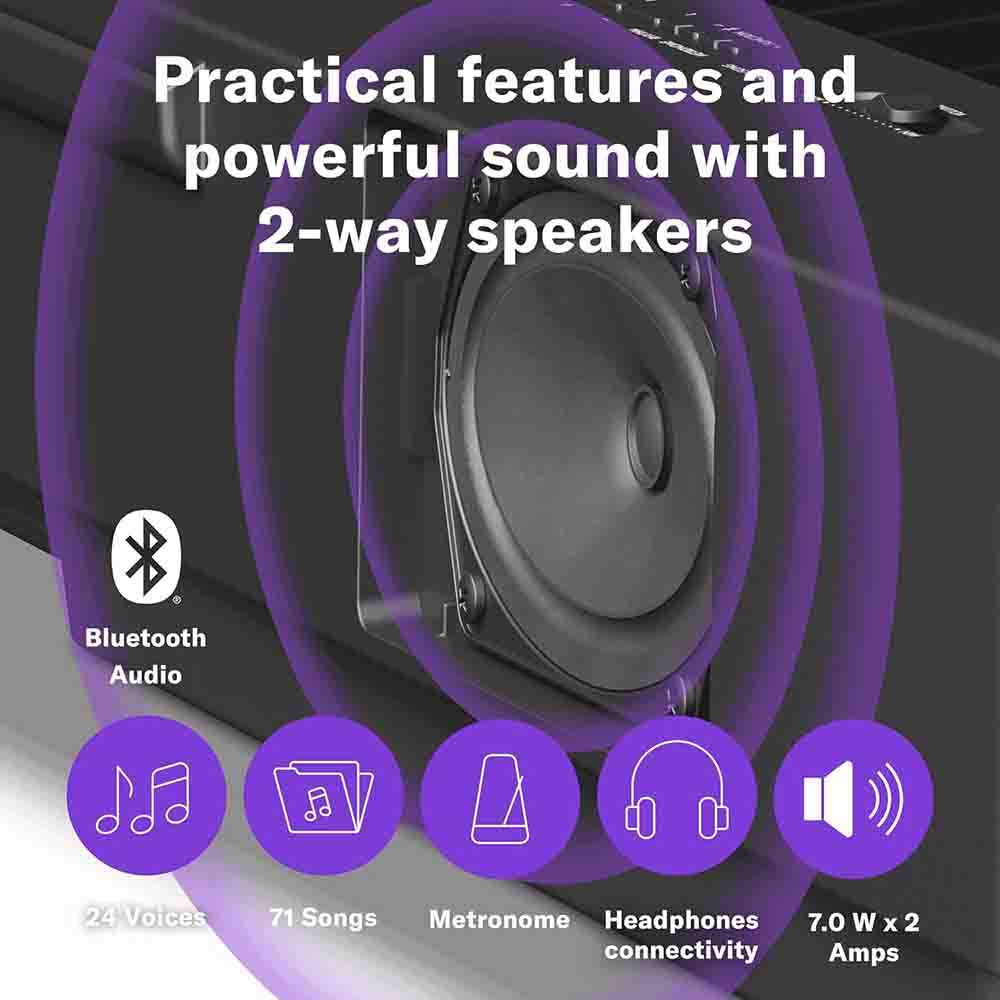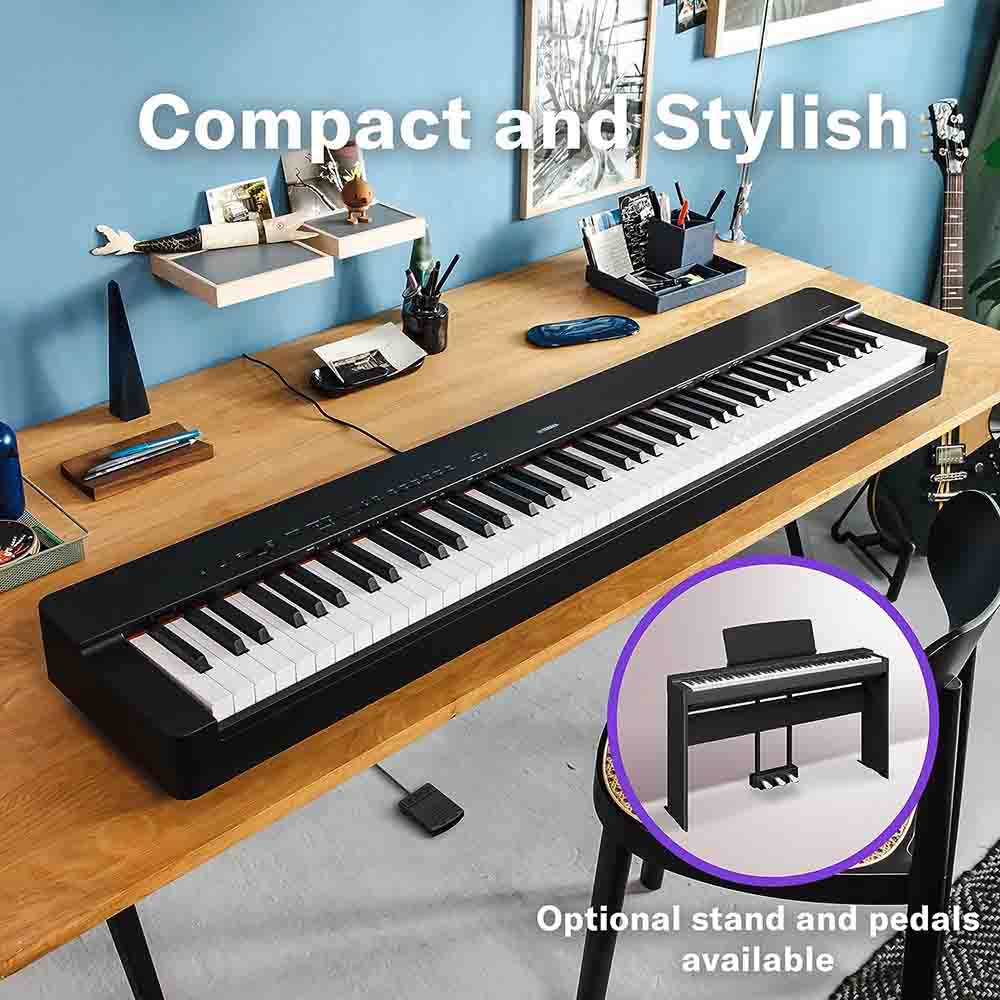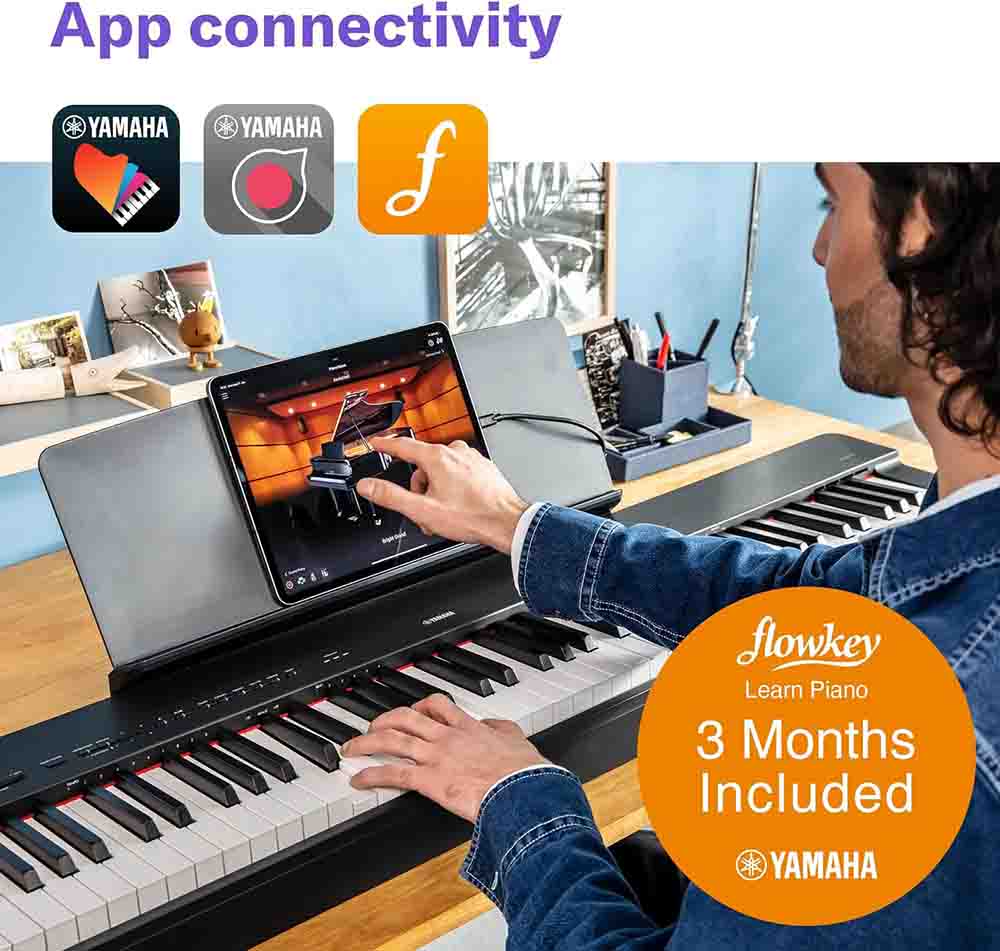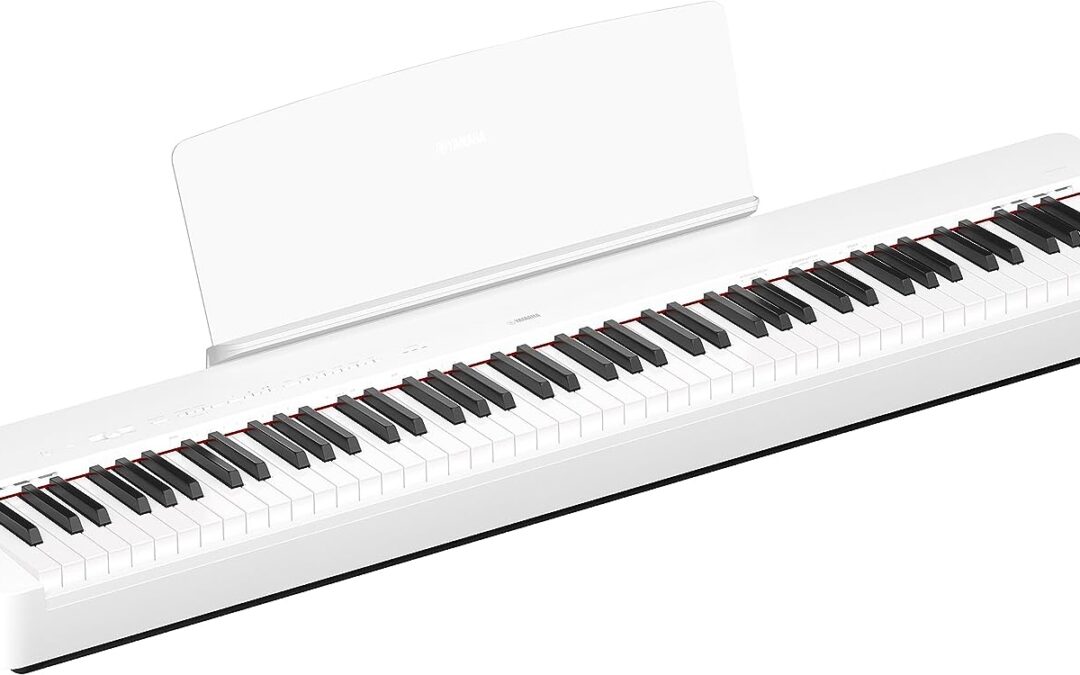Yamaha has recently released the Yamaha Psr E263, a 61-key keyboard that is perfect for students, aspiring musicians, and teachers. The Yamaha Psr E263 comes equipped with around 112 songs, 130 accompaniment styles, and 400 voices, making it a comprehensive resource for both practice and education. Yamaha’s Education Suite (Y.E.S.) and lesson guides are also included to assist with learning.
Additionally, the keyboard comes with songbooks and sheet music, making it easy to follow along. The keyboard also includes a 3.5mm aux input, which allows you to connect your laptop, smartphone, or MP3 player and play along with your favorite songs or backing tracks. The built-in amplifiers and speakers allow for sound projection, or you can use headphones for private practice. The master EQ and effect features allow for enhancing instrument sounds.
The keyboard also has a Portable Grand button that instantly takes you back to the grand piano voice. You can capture your progress, performances, and ideas with the built-in phrase recorder. Overall, the Yamaha PSR-E263 is a great option for anyone looking to learn and practice on a versatile and high-quality keyboard.


YAMAHA PSR-E263 REVIEW
The Yamaha Psr E263 is available in both battery-powered and AC-powered options, with the power supply sold separately.Furthermore, it is also lightweight and highly portable.
Specification of PSR-E263
Design
The Yamaha Psr E263 is a great starting point for beginners of all ages who want to explore the world of music. It is reasonably priced and helps to make learning music easy and enjoyable. The Yamaha Psr E263 has a compact and portable design, making it easy to operate and perfect for on-the-go use. With a 61-note keyboard, it offers 400 instrument voices, including high-quality sounds of iconic grand pianos. However, it is important to keep in mind that the sound quality may not match that of models such as the YDP 144, 163, or P125.
Sound Quality
Unlike most entry-level keyboards, the Yamaha Psr E263 does not compromise on sound quality. Its built-in speakers produce crisp and crystal-clear sound, thanks to the ultra-wide stereo feature, even at maximum volume. While the sound may not be as punchy as some may prefer, considering the price point of around $120, it is impressive. Additionally, the keyboard offers quality effects such as reverb and chorus, which can enhance creativity and exploration of sound.
Size & Weight
The Yamaha Psr E263 is a mid-range model in the Yamaha portable series. Its height is approximately 4-3/16 inches, making it easy to move and store. It weighs approximately 8.7 lbs and has a width of approximately 37 inches.
Connectivity
The Yamaha Psr E263 also enables you to move towards the digital and connected world. At the back, there is an aux line input for connecting an MP3 player to play along with your preferred songs. Additionally, with its portability and the ability to run on batteries, you can easily play your music anytime, anywhere, even at 3 AM, which is known as the hour of creativity for writers, artists, and designers
Features
- 400 high-quality instrument voices and 130 auto-accompaniment styles.
- The keyboard comes with a book of 112 songs, which are also available for download on the web.
- The Yamaha Education Suite includes a nine-step lesson function.
- The PSR-E263 features Master EQ and Ultra Wide Stereo.
- Compact and portable design with the option to use batteries (6 x AA).
Here are the pros and cons of PSR-E263:
Pros
- 400 high-quality instrument voices and 130 auto-accompaniment styles.
- Lesson function with Yamaha Education Suite (Y.E.S.) for easy learning.
- Duo mode for playing with a partner.
- The recording feature is available
- The PSR-E263 has a compact design.
Cons
- The keyboard does not include a power cord.
- The accompaniment sounds may be too loud for some users.
- No USB connectivity for recording or MIDI communication.
Additional Accessories for the Yamaha PSR-E263
Power Supply
Thank you for the additional information. It’s important to use the manufacturer’s recommended power supply to ensure the proper voltage and compatibility with the Yamaha Yamaha Psr E263. It’s good to know that the power supply can be purchased as a bundle with the keyboard or as a stand-alone item on Amazon for convenience.
Yamaha PSR-E263 Bundles
If you are looking for a budget-friendly option for a seat and music stand to use with the Yamaha Yamaha Psr E263, consider purchasing the Yamaha Psr E263 bundle. This bundle includes a seat, stand, and power supply, all in one convenient package, and is priced similarly to buying the items separately.
Foot Pedal
Although a foot pedal is not mandatory when starting to learn, it is recommended to incorporate it early on. The Yamaha FC4A is a dependable and reasonably priced foot pedal that complements the Yamaha Psr E263, allowing you to enhance your playing and take advantage of more of the keyboard’s features.
Headphones
Practicing piano can be disturbing for neighbors and family members, and beginners might not want others to hear their early mistakes. Therefore, headphones are an essential accessory for this keyboard, and the OneOdio Adapter-Free Closed Back headphones are a great choice. The over-ear closed-back design improves sound quality and isolation, giving players privacy and preventing disturbances for others.


Comparison: BetweenYamaha PSR E263 vs Yamaha PSR E363
The Yamaha PSR E363 features 61 touch-sensitive keys, whereas the Yamaha PSR E263 has 61 standard keys. The former also boasts 574 sounds and 165 preset styles, whereas the latter only has 384 sounds and 130 preset styles.The PSR E363 has an advantage over the PSR E263 in terms of internal songs and polyphonic notes, with 154 internal songs and 48 polyphonic notes compared to the PSR E263’s 102 internal songs and 32 polyphonic notes.. Both keyboards are equipped with.
-
A metronome and transposer.
-
The Yamaha PSR E363 has a dual function
The PSR E363 offers several features that are not available on the PSR E263. For instance, it comes with a 2-track sequencer and can save up to 5 user songs. The Yamaha PSR E363 boasts additional features such as 150 arpeggios, a recording function with recording memory, and a backlit LCD screen. Another advantage of the PSR E363 is that it supports IOS iPhone/iPod applications that can be used with the keyboard.
Comparison: Yamaha PSR E263 Compared to Yamaha YPT 260
The Yamaha PSR E263 typically costs around €17 more than the Yamaha YPT 260. Despite this difference in price, both models share many similarities. Both the Yamaha PSR E263 and Yamaha YPT 260 have 61 standard keys and Master EQ. Additionally, the YPT 260 also has 384 sounds and 16 drum/SFX kits, which is the same as the PSR E263. They also both come with 130 preset styles and have 32 polyphonic voices.
A minor difference between the YPT 260 and the PSR E263 is that the YPT 260 comes with 112 preset songs, while the PSR E263 has 102 internal songs.Another notable difference between the Yamaha YPT 260 and PSR E263 digital pianos is that the YPT 260 features reverb, chorus, and ultra-wide stereo effects, while the PSR E263 only has chorus and reverb functions.
Both models offer a metronome and Transposer function, as well as a one-touch setting function. They also both include a learning function and the “Yamaha Education Suite,” along with connections for an auxiliary audio input, headphone output, and sustained pedal input (sustained pedal not included).
Additionally, both models feature two 2.5W speakers, with similar dimensions of 940 x 317 x 106mm and a weight of 4 kg. They also both support sheet music and use the PA-130 power supply, and can be used with batteries.
Comparison: Yamaha PSR E263 Compared to Casio CTK 2500
The Yamaha PSR E263 digital piano usually costs around €11 more than the Casio CTK 2500, but it offers a number of unique features for that small price gap.
Both keyboards have 61 keys, with the Casio model featuring a basic design and a piano learning mode like the Yamaha. The Casio CTK 2500 offers 400 sounds, 60 preset demo songs, 100 preset rhythms, and 48 polyphonic notes, which is more than the Yamaha PSR E263 that has 384 sounds (including 16 drum sounds), 102 internal songs, 130 preset styles, and 32 polyphonic notes.
Both models offer reverb and chorus effects, with the Casio CTK 2500 additionally featuring dance music rhythms. They both also have a metronome and transposer function, as well as a sustain pedal connection and an included external power supply. Finally, both models can be run on batteries for portable use.
Why would you purchase the Yamaha PSR-E263?
If you’re a beginner and eager to learn piano, but unsure if you have what it takes, the PSR keyboard is a great option. You don’t have to spend a lot of money on piano lessons before upgrading to a more advanced keyboard or piano. Even if you’re not a music lover, this keyboard can still capture your interest.
For beginners, the Yamaha Education Lesson Function is a major highlight. The Yamaha Education Lesson Function included in the PSR E263 makes piano lessons easy and enjoyable.The built-in songs and student helpers such as the listen, timing, and waiting modes eliminate the need for a teacher in the beginning. Another amazing feature of this keyboard is the recording mode. You can easily capture your playing.
The Duo Mode is a feature that simplifies the job of a teacher. It’s perfect for teaching and playing at the same time on the same keyboard. This function divides the keyboard into two equal parts, allowing the student to watch and follow the teacher’s playing.
CONCLUSION
The Yamaha PSR-E263 is an excellent keyboard for young learners or adult beginners alike. The sound quality is rich and full, making it feel like a serious instrument rather than a toy. The keyboard offers a vast library of effects and instrument voices, allowing for plenty of learning and experimentation.
Additionally, it is lightweight, compact, and can be powered by batteries, making it easily portable for practice on-the-go. With onboard lessons included, there’s no excuse to miss a practice session.

